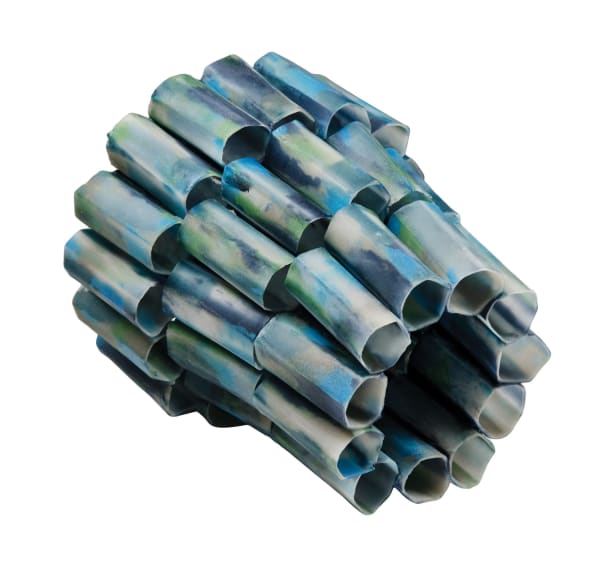We are pleased to announce the 2017 Emerging Voices artist and scholar, as well as our shortlist artists. The American Craft Council established the Awards in 2015 to recognize and celebrate the talents of remarkable young makers who contribute to craft with their hands, minds, and creative spirits. Jurors Karen Hampton, Jiseon Lee Isbara, Michael Radyk, and T’ai Smith chose from a pool of candidates within five years of significant training. It is our pleasure to introduce you to these five outstanding artists and distinguished scholar.
[...]
SHORTLIST ARTIST, ANNA MLASOWSKY
When early success started to feel like a creative burden, Anna Mlasowsky changed directions. “I was doing residencies, I had exhibitions – but the more I got, the more it pushed me into only having to work in glass, and people having a certain expectation about what my work would be like.”
So in 2014, she stared working in other mediums. Still, she couldn’t help but see common ground with her previous work. “In my video and installation work, I’m interested in transformation, I’m interested in transparency and translucency, I’m interested in light and reflection and also in internal reflection. In a way, those are the things I was excited about with glass, too.”
Mlasowsky’s spirit of experimentation has paid off in other ways. A grant from the Glass Art Society in 2014 enabled her to work on an idea for what she calls “moldless pâte de verre.” What started as glass particles mixed into wood glue has grown into a completely new way to work with glass that allows for handforming, building onto an interior scaffolding, or even throwing on a pottery wheel. After three years of refining the technique, Mlasowsky, 32, says, she’s ready to really explore what she can build.
“The challenge with working with something that is so out of the ordinary is that there is no one who can give me any advice,” she says. “So I’m really at the end and at the beginning.”
What do you know now that you didn’t when you started?
I mean – everything, right? You don’t know the material, you don’t know what the possibilities are, and everyone keeps telling you all the things that you can’t do with it. On the way, with every project, with every new question, you discover that there’s so much more possible than what you originally thought. I think what I didn’t know when I started working in glass – and that goes for any material – is that it’s more like a relationship that you enter into, and you really have to get to know each other. You learn more about yourself as you learn more about the material.
What are some ongoing challenges you face?
It’s a difficult question, because there are a lot of things. This idea of performance-based evaluation – that we get rewarded for results – is what I struggle with most in this field. We don’t get rewarded for failure, and most of what I do is fail and try things out that don’t work. Failing is necessary for progress.
Then again, I think I don’t have very much patience; I struggle with myself a lot of times. Also, I have number dyslexia, and calculating, measuring, and math is something I have to do every day – and I need help with it. That handicaps me a lot, that I can’t trust myself and need help with basic things.
What’s your favorite part of the process?
The excitement comes when things happen that are unexpected, and when there is a discovery – when something happens that I didn’t know about in the beginning and that I didn’t even know I was looking for. Then things start falling into place. Because that’s also where I start getting ideas.
I don’t ever set off with a very fixed, solid idea of “This is exactly what I’m going to do, and this is exactly what I make.” I do a lot of experimentation. And through that experimentation, I come to developing ideas. It’s like going on a road trip. Coming home is when it gets terrible; the coming home part is the part when you execute the manual labor to make the piece. It is often less interesting, because less learning is happening. Setting off to something is what excites me.
This article originally appeared in the October/November 2017 issue of American Craft.
Copyright © 2017. All rights reserved.
Source Link: American Craft
![]() Download: Anna Mlasowsky American Craft June/July 2017
Download: Anna Mlasowsky American Craft June/July 2017



